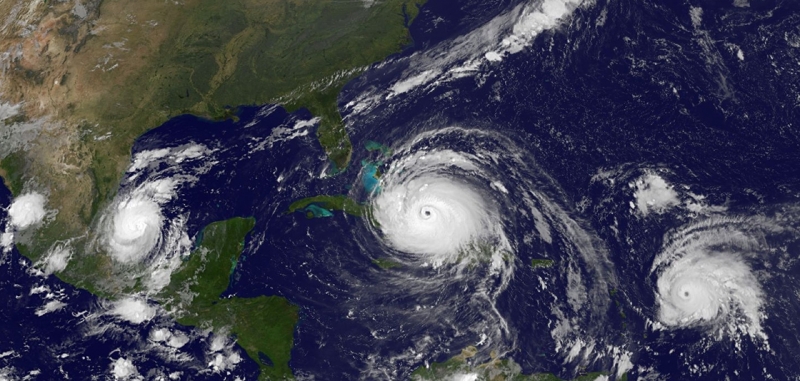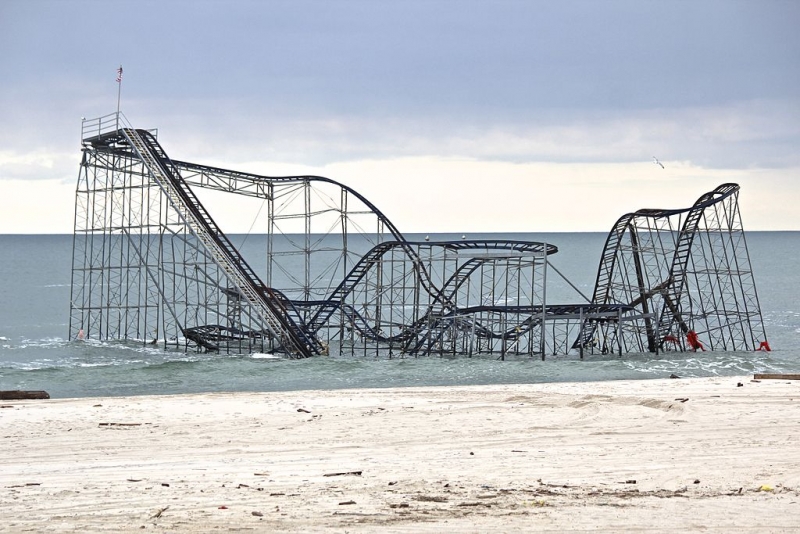Early in my career, I was conducting bird research for a very inspiring, but demanding professor. With each bird identification that I brought to him, he would respond with a series of qualifying questions, challenging me to provide sufficient proof that my observations would meet his standards for making a positive identification of whatever species I claimed to have seen. Somewhat over-confident and always eager to report my sightings, his response usually left me unsatisfied, and often frustrated. “Trust but verify,” this professor would always say.
Years later, in my current role as Climate Adaptation Practice Director for AECOM, I find this approach critically important to the work we are doing to plan and implement climate adaptation and disaster resilience projects across the globe. There is an urgent need to not only trust that investments are needed to build resilience to adverse shocks and stresses affecting our cities, businesses, and supply chains, but to verify that the actions taken and implemented are yielding the desired outcomes.
 In 2017, according to the National Oceanic and Atmospheric Association (NOAA), there were 16 weather and climate disasters that each created losses in excess of $1 billion. Of course, there were countless additional natural disasters that caused significant damages less than one billion dollars. But all told, 2017 was the costliest year in terms of natural disasters, with cumulative damages exceeding $300 billion. Increasing urbanization and densely concentrated financial, physical, and social investments, particularly in coastal and riverine regions, are subject to climate change impacts that create new challenges or exacerbate existing ones. We live in a world where there is an urgent need to plan for climate change-influenced shock events and stresses while incorporating disaster resilience into our communities and businesses.
In 2017, according to the National Oceanic and Atmospheric Association (NOAA), there were 16 weather and climate disasters that each created losses in excess of $1 billion. Of course, there were countless additional natural disasters that caused significant damages less than one billion dollars. But all told, 2017 was the costliest year in terms of natural disasters, with cumulative damages exceeding $300 billion. Increasing urbanization and densely concentrated financial, physical, and social investments, particularly in coastal and riverine regions, are subject to climate change impacts that create new challenges or exacerbate existing ones. We live in a world where there is an urgent need to plan for climate change-influenced shock events and stresses while incorporating disaster resilience into our communities and businesses.
Much is already happening. Investments are being made to support resilience planning from federal, state, and local governments, by and for companies, and through philanthropy and nongovernmental organizations (NGOs).
The 100 Resilient Cities organization, pioneered by the Rockefeller Foundation, is supporting 100 cities across the world through financial and technical assistance to develop resilient strategies (AECOM is a strategic partner to 100 Resilient Cities and is facilitating technical resilience planning with over 30 participating cities). International financial institutions and development agencies and NGOs are investing in myriad climate adaptation and disaster resilience initiatives. And the private sector, though more discreetly through “asset-hardening” and other capital improvement investments, is also engaging in actions to become more resilient to natural disasters and changing conditions.
While these are positive and crucial steps given the growing cost of natural disasters, there is an increasing need for demonstrated return on investment for these projects. Much investment in disaster resilience comes soon after an extreme event (e.g., influx of funding to New Orleans post-Hurricane Katrina, or to the New York City Metro area following Superstorm Sandy). However, are there sufficient resources being spent on monitoring and evaluating how these investments perform when tested? How do we know that the resilience and adaptation initiatives being planned, designed, and implemented actually reduce vulnerability and risk?
We actually know quite a bit on this subject. In January of this year, a new report issued by the National Institute of Building Sciences concluded that for every $1 spent on hazard mitigation (through federally funded mitigation grants provided by agencies such as the Federal Emergency Management Agency and U.S Department of Housing and Urban Development, for example), the nation saves $6 in future disaster costs. This critical insight demonstrates the value of investing to reduce vulnerability and risk to a variety of weather-related events (e.g., flooding, hurricanes, fires). However, more pre-disaster investment and planning are needed.
 Public and private funding will always be tight. Determining how to apply limited resources to future challenges based on projections and probability will always be a challenge. By evaluating and creating solid examples of how investing in disaster resilience and climate adaptation today empirically reduces vulnerability and risk to tomorrow’s natural disasters is crucial to grow investment and funding. We need to provide proof of concept that these initiatives meant to deliver future value in risk reduction can create short-term benefits as well. These quantified and qualified additional outcomes from pre-disaster resilience investments—such as environmental benefits, added green space from increased coastal wetlands created to mitigate storm surge, parks designed with significant water retention attributes, or improved congestion reduction from roadway upgrades designed to withstand larger rain events—can enhance the value proposition for funding projects.
Public and private funding will always be tight. Determining how to apply limited resources to future challenges based on projections and probability will always be a challenge. By evaluating and creating solid examples of how investing in disaster resilience and climate adaptation today empirically reduces vulnerability and risk to tomorrow’s natural disasters is crucial to grow investment and funding. We need to provide proof of concept that these initiatives meant to deliver future value in risk reduction can create short-term benefits as well. These quantified and qualified additional outcomes from pre-disaster resilience investments—such as environmental benefits, added green space from increased coastal wetlands created to mitigate storm surge, parks designed with significant water retention attributes, or improved congestion reduction from roadway upgrades designed to withstand larger rain events—can enhance the value proposition for funding projects.
Data, research, and objective measures to determine successes and failures are vital: Did a bioswale actually reduce local flooding? Did a seawall limit the amount of coastal flooding and not cause any unanticipated consequences? How do we simultaneously prepare for extreme weather events and long-term stressors such as sea-level rise and warming temperatures? More examples are needed from across various sectors and geographies.
At AECOM, we are working with the private sector, governments, nonprofits, and NGOs to demonstrate the value of investing in disaster resilience actions today. For example, AECOM has conducted multiple Hazard Mitigation Assistance Loss Avoidance studies for FEMA. These studies evaluate the benefits attributed to a hazard mitigation project following a subsequent event, such as Hurricanes Matthew and Harvey, and look at the performance of the project in reducing impacts and realizing benefits. Working directly with the city of New Orleans, we also led a consortium of partners to identify the disaster preparedness and resilience of small businesses on six commercial corridors throughout the city. Using in-person surveys of more than 200 businesses, we recorded valuable information on disaster preparedness as well as lessons learned from previous disaster experience, and developed a suite of recommendations for both the city and the small businesses. Currently, AECOM is working with the University of North Carolina-Chapel Hill to evaluate if resiliency measures completed following Hurricane Floyd made communities more resilient to Hurricane Matthew.
The creation of supporting case studies and the compiling of demonstrable examples of implementation helps us verify the value of investment so that communities and businesses can have the confidence to invest in creating a more resilient society to deal with the natural disasters of tomorrow.